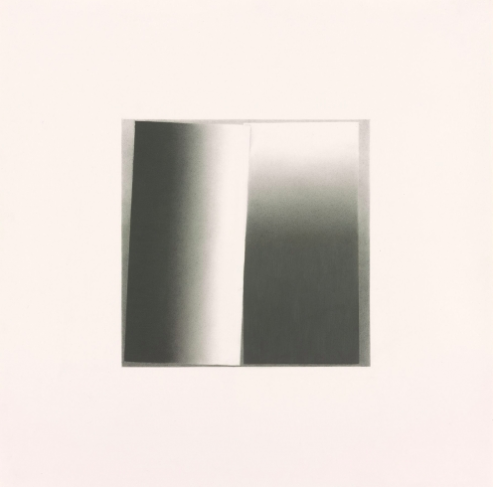About the Artwork
“Made of numerous layers of almost imperceptible strokes the subtle gradation from dark to light suggests volume and depth, and gives this deceptively simple composition a great tactile beauty. The drawing is typical of Ortiz-Hernández's work in its fusion of a minimalist aesthetic with an exquisite sense of refinement.” Morgan Library & Museum
Between the Known and the Unknown
Drawings of Gloria Ortiz-Hernández - by Gregory Volk
“Ortiz-Hernández’s methodology is labor intensive, meditative, repetitive to the point of obsessive, and also curiously intuitive. She begins by lightly depicting the surface of a circle or square. Next come dozens and even hundreds of all-over layers, always done with fine, tiny marks just barely visible to the eye. The way all these marks and layers intersect and interact determines the complex surface structure, texture, and color of the works….”
Drawing the Square - by Edward J. Saywell
“Gloria Ortiz-Hernández’s recent abstract drawings address directly the process and perception of art. She limits herself to the simplest and most restrained of pictorial vocabularies—a black square on white paper—to examine fully how the choice of medium and compositional forms is critical to “the act of seeing.” In exploring the universal process of how we all perceive visual information, her work, free from self-expression and any preexisting narrative, is not intended as an end in itself, but calls for completion through the viewer’s own personal interpretation and understanding of the work.
“Common to all of Ortiz-Hernández’s drawings is the form of the black square. Simultaneously one of the most straightforward and powerful of shapes, the square holds the space of the paper with great authority. The blackness of the squares, however, moves the concern of the drawings beyond that of just form to that of weight and physical structure. By grouping or pairing together works that are identical apart from weight of the blackness, Ortiz-Hernández makes explicit how the subtlest of changes can affect our perceptual experience of the square’s interaction with the surrounding space of the pristine white paper. With exceptional sensitivity to the weight of the black, she uses just three variables to tease out the most remarkable of variations: tone, choice of medium and, common to all drawings, the diffusion of the hard-edged clarity of the squares’ edges.”


